

Articles
How To Store Condensed Milk
Modified: January 7, 2024
Learn the best way to store condensed milk for long-lasting freshness. Our helpful articles provide expert tips and tricks for preserving this essential ingredient.
(Many of the links in this article redirect to a specific reviewed product. Your purchase of these products through affiliate links helps to generate commission for Storables.com, at no extra cost. Learn more)
Introduction
Condensed milk is a staple ingredient in many delicious desserts and recipes, offering a creamy and sweet flavor that adds a touch of indulgence to any dish. However, if you find yourself with leftover condensed milk or want to stock up on this versatile ingredient, it’s essential to know how to properly store it to maintain its freshness and quality. In this article, we will explore the different methods and best practices for storing condensed milk, ensuring that you can enjoy its rich taste for an extended period.
Condensed milk is quite different from regular milk due to its thick and concentrated form. It is made by heating milk and removing a significant amount of water content, resulting in a thick, syrupy consistency. Due to its high sugar content, condensed milk has a longer shelf life than regular milk, but proper storage is still crucial to prevent spoilage and maintain its optimal taste and texture.
When it comes to choosing a storage method for condensed milk, several factors need to be considered. These factors include the desired shelf life, convenience, available storage space, and the intended use of the condensed milk. By understanding these factors, you can select the most appropriate storage method for your needs.
In the following sections, we will delve into the best practices for storing condensed milk, recommended storage containers, and various storage options such as refrigeration and freezing. Additionally, we will discuss the importance of proper labeling and safety precautions to ensure the longevity and safety of your stored condensed milk. By following these guidelines, you can keep your condensed milk fresh and ready to use whenever your sweet tooth calls.
Key Takeaways:
- Properly storing condensed milk is crucial for maintaining its rich flavor and creamy texture. Consider factors like shelf life, convenience, and storage space to choose the best method for your needs.
- Whether refrigerating, freezing, or using airtight containers, follow best practices like labeling, portion control, and regular checks for spoilage to ensure your condensed milk stays fresh and ready to enhance your culinary creations.
Read more: How To Store Leftover Condensed Milk
How Does Condensed Milk Differ from Regular Milk?
Before exploring the best practices for storing condensed milk, it’s important to understand the key differences between condensed milk and regular milk. While both are derived from dairy, condensed milk undergoes a unique process that sets it apart.
Regular milk is collected from cows and undergoes minimal processing before being packaged and sold. It contains a natural balance of water, fat, protein, lactose, vitamins, and minerals. Although it can spoil relatively quickly, refrigeration helps to prolong its shelf life.
On the other hand, condensed milk is created by heating regular milk and removing a significant portion of its water content. This process also involves adding sugar to create a thick and sweet syrup-like consistency. The removal of water and addition of sugar give condensed milk its unique characteristics and longer shelf life.
Due to its thick consistency and high sugar content, condensed milk has a longer shelf life compared to regular milk. It can be stored at room temperature in an airtight container for several months. However, it’s important to note that once opened, condensed milk should be refrigerated to maintain its quality and prevent spoilage.
Another key difference between condensed milk and regular milk is the fat content. While regular milk contains varying levels of fat depending on the type (whole, skim, etc.), condensed milk is typically richer and creamier due to the concentration process. This makes condensed milk a popular ingredient in desserts and coffee recipes, where its velvety texture and sweet flavor can enhance the final product.
Understanding these differences will help you make informed decisions when storing condensed milk. While regular milk requires refrigeration to prevent spoilage, condensed milk can be stored at room temperature or in the refrigerator depending on its state (opened or unopened). The concentration and added sugar in condensed milk contribute to its longer shelf life, but proper storage practices are still essential to maintain its freshness and taste.
Factors to Consider When Choosing a Storage Method
When it comes to storing condensed milk, choosing the right storage method is crucial in ensuring its longevity and quality. Several factors should be taken into consideration when deciding how to store your condensed milk:
- Shelf Life: Consider how long you need to store the condensed milk. If you plan on consuming it within a short period, refrigeration may suffice. However, if you want to extend its shelf life for several months, freezing or shelf-stable storage methods would be more suitable.
- Convenience: Think about the level of convenience you desire. Some storage methods may require more effort or space, while others offer simplicity and ease of access. Consider your lifestyle and storage capabilities to choose a method that suits your needs.
- Intended Use: Determine how you plan to use the condensed milk. If you frequently use it in recipes that require small amounts, portioning it into smaller containers may be beneficial. For bulk storage, larger containers or freezing may be more suitable.
- Taste and Texture Preference: Different storage methods can affect the taste and texture of condensed milk. For example, refrigeration may help preserve the creamy texture, while freezing can slightly alter the texture. Consider your preferences and how each storage method may impact the overall quality.
- Available Storage Space: Evaluate the amount of available storage space you have. Some storage methods, such as freezing, may require more space, while compact airtight containers can be stored in smaller areas. Ensure you have adequate space to accommodate your chosen storage method.
- Environmental Factors: Take into account the surrounding environment, especially temperature and humidity levels. High temperatures and humidity can accelerate spoilage, so choose a storage method that protects the condensed milk from these factors.
By considering these factors, you can make an informed decision on the ideal storage method for your condensed milk. It is important to evaluate each factor and prioritize what is most important to you, whether it’s convenience, shelf life, or taste preservation. With the right storage method in place, you can ensure that your condensed milk remains fresh and ready to use whenever culinary inspiration strikes.
Best Practices for Storing Condensed Milk
To ensure the longevity and quality of your condensed milk, it is essential to follow some best practices when storing it. By adhering to these guidelines, you can preserve the flavor, texture, and freshness of your condensed milk for an extended period. Here are some key best practices to consider:
- Keep it cool: Condensed milk is best stored in a cool environment to prevent spoilage. Choose a storage location that is away from direct sunlight, heat sources, and areas with high humidity.
- Use airtight containers: When transferring condensed milk from its original packaging, opt for airtight containers to maintain its freshness. Ensure that the containers are clean, dry, and properly sealed to prevent air and moisture from entering.
- Label your containers: Properly label your containers with the date of storage to keep track of freshness. This will help ensure that you can use older batches first and prevent any confusion when reaching for your condensed milk.
- Portion control: If you frequently use condensed milk in small quantities, consider dividing it into smaller portions before storing. This will reduce the need to repeatedly open and expose the entire batch to the air, thus minimizing the risk of spoilage.
- Keep it separate: Keep your condensed milk away from pungent or strong-smelling foods to prevent it from absorbing any unwanted odors or flavors. Store it separately in your refrigerator or pantry to maintain its original taste.
- Regularly check for spoilage: Periodically inspect your stored condensed milk for signs of spoilage, such as an off smell, discoloration, or unusual texture. If you notice any of these signs, discard the product as it may no longer be safe for consumption.
- Follow expiration dates: Pay attention to the expiration dates on your condensed milk cans or packaging. While condensed milk can last beyond its expiration date if stored properly, it is still advisable to consume it before the indicated date for the best quality.
By following these best practices, you can ensure that your condensed milk retains its rich flavor and creamy texture for an extended period. Proper storage techniques, including the use of airtight containers, labeling, and regular checks for spoilage, will help maintain the freshness of your condensed milk and maximize its shelf life. Incorporate these practices into your storage routine to enjoy the delicious taste of condensed milk whenever you need it.
Recommended Storage Containers
Choosing the right storage containers for your condensed milk is crucial in maintaining its freshness and quality. The ideal container should be airtight, durable, and resistant to moisture and odors. Here are some recommended storage containers for your condensed milk:
- Glass Jars: Glass jars with tight-fitting lids are an excellent option for storing condensed milk. They are non-reactive, which means they won’t alter the taste or quality of the milk. Glass containers also provide visibility, allowing you to easily see the contents and monitor any signs of spoilage.
- Plastic Food Storage Containers: Look for food-grade plastic containers that are specifically designed for storing liquids. Choose containers with airtight seals to prevent air and moisture from entering. Additionally, opt for containers that are BPA-free for added health and safety.
- Metal Containers: Metal cans or containers with secure lids can be a suitable option for storing condensed milk. However, it is important to ensure that the cans are in good condition without any dents or damage that could compromise the seal or lead to contamination.
- Refrigerator-Safe Bags: There are specially designed bags available that are safe for use in the refrigerator. These bags are made with food-grade materials and have sealable closures to keep your condensed milk fresh and prevent any leakage.
- Vacuum-Sealed Bags: Vacuum-sealed bags provide an excellent way to remove excess air and create an airtight seal around your condensed milk. This method can help extend the shelf life of your condensed milk and protect it from freezer burn when storing in the freezer.
Regardless of the type of container you choose, ensure that it is thoroughly cleaned and dried before transferring the condensed milk. This will help prevent any contamination and ensure the highest level of hygiene in storing your condensed milk. Also, consider the size of the containers based on your usage and storage needs. Smaller containers may be more suitable for portioning or frequent use, while larger containers can accommodate bulk storage.
By selecting the appropriate storage containers, you can maintain the quality and freshness of your condensed milk. Choose containers that provide an airtight seal and protect the milk from exposure to air, moisture, and odors. Follow these recommendations to ensure that your condensed milk stays delicious and ready to use whenever you need it.
Refrigeration as a Storage Option
Refrigeration is one of the most common and convenient methods to store condensed milk, especially after it has been opened. While unopened cans of condensed milk can be stored at room temperature, refrigeration helps to maintain the freshness and quality of the milk once it’s been exposed to air.
When refrigerating condensed milk, it is important to transfer the contents to an airtight container. Choose a container that is suitable for refrigeration, such as a glass jar or a plastic food storage container with a tight-fitting lid. This will help prevent air and moisture from entering the container and potentially causing spoilage.
Here are some key points to consider when storing condensed milk in the refrigerator:
- Temperature: Set your refrigerator to a consistent temperature between 34°F (1°C) and 40°F (4°C) to ensure optimal storage conditions for condensed milk. Avoid storing it in the refrigerator door, as temperature fluctuations are more likely to occur there.
- Container Placement: Store your container of condensed milk in a designated spot in your refrigerator. Keeping it towards the back of the fridge and away from other pungent or strong-smelling foods will help prevent any unwanted odors or flavors from transferring to the condensed milk.
- Labeling and Expiration Dates: Properly label your container with the date of storage to track its freshness. Additionally, refer to the expiration date on the original packaging and try to consume the refrigerated condensed milk before that date for the best quality.
- Use within recommended timeframe: Refrigerated condensed milk is typically safe to consume for about 3 to 5 days. However, it is advisable to use it within a shorter timeframe to maximize freshness and taste. Always check for any signs of spoilage, such as an off smell or unusual texture, before consuming.
- Mix before using: When you’re ready to use the refrigerated condensed milk, give it a thorough stir or mix with a spoon before incorporating it into your recipes. This will help distribute any settled sugars or fats and ensure a consistent texture and flavor.
Refrigerating condensed milk not only helps preserve its freshness but also keeps it at a safe temperature, minimizing the risk of bacterial growth. By following these guidelines, you can ensure that your refrigerated condensed milk remains delicious and of high quality for an extended period.
Store condensed milk in an airtight container in the refrigerator once opened. It will last for about 2 weeks. If unopened, it can be stored in a cool, dry place for up to a year.
Freezing Condensed Milk for Long-Term Storage
If you have a surplus of condensed milk or want to extend its shelf life beyond what refrigeration offers, freezing is an excellent option. Freezing can help preserve the flavor and quality of condensed milk for a more extended period, allowing you to have a ready supply on hand whenever you need it.
Here are some key steps to follow when freezing condensed milk:
- Transfer to freezer-safe containers: Pour the condensed milk into airtight, freezer-safe containers. It is advisable to divide it into smaller portions to make it more convenient for future use. Ensure that the containers are clean, dry, and can withstand freezing temperatures without any risk of cracking or breaking.
- Labeling and packaging: Label the containers with the date of freezing to keep track of their freshness. It is also helpful to note the quantity or volume of condensed milk in each container. Place the containers in a freezer bag or wrap them with plastic wrap to provide an extra layer of protection against freezer burn and help maintain the quality of the milk.
- Freeze at a constant temperature: Set your freezer temperature to 0°F (-18°C) or below. It is essential to maintain a consistent and cold temperature to prevent any potential spoilage or degradation of the condensed milk during storage.
- Thawing and using frozen condensed milk: When you’re ready to use the frozen condensed milk, transfer it to the refrigerator and allow it to thaw gradually. This process can take several hours or overnight, depending on the quantity and consistency of the milk. Once thawed, give it a thorough mix or stir to achieve a smooth and consistent texture before using it in your recipes.
- Recommended storage duration: While frozen condensed milk can last for several months, it is advisable to use it within 3 to 4 months for optimal taste and quality. Over time, the texture of the thawed condensed milk may become slightly grainy, but it will still be safe to consume.
Freezing condensed milk is an excellent way to extend its shelf life and have a reliable supply on hand. However, it is important to note that freezing can slightly alter the texture of the milk. The proteins and fats in condensed milk may separate and cause a grainy texture once thawed. Despite this, the frozen condensed milk can still be used in various recipes, such as baking or making ice cream.
By following these steps and guidelines, you can successfully freeze condensed milk and ensure that it remains delicious and usable for an extended period.
Using Airtight Containers for Shelf-Stable Storage
In addition to refrigeration and freezing, another option for storing condensed milk is using airtight containers for shelf-stable storage. This method is suitable for unopened cans or tubes of condensed milk that do not require immediate refrigeration.
Here are the steps to follow when using airtight containers for shelf-stable storage:
- Check the packaging: Before transferring condensed milk to airtight containers, ensure that the original packaging is intact and has not been compromised. Unopened cans or tubes of condensed milk are specifically designed for shelf-stable storage and can be safely stored at room temperature.
- Choose appropriate containers: Select clean, airtight containers that can accommodate the amount of condensed milk you plan to store. Glass jars with tight-fitting lids or food-grade plastic containers with secure seals are recommended for this purpose.
- Transfer the condensed milk: Carefully pour or scoop the condensed milk from the can or tube into the airtight containers. Take care to avoid any spillage or contamination during this process.
- Seal the containers: Ensure that the lids or seals of the containers are tightly secured to create an airtight seal. This will help prevent air and moisture from entering, which can lead to spoilage and degradation of the condensed milk.
- Store in a cool, dry place: Find a suitable storage location in your pantry or cupboard away from direct sunlight and sources of heat. Maintaining a consistent temperature and avoiding extreme temperature fluctuations will help preserve the quality and freshness of the condensed milk.
- Rotate stock and monitor expiration dates: To ensure that your shelf-stable condensed milk remains fresh, it is important to rotate your stock regularly and pay attention to expiration dates. Consume the oldest stock first and replace it with a fresh supply to maintain optimal taste and quality.
Using airtight containers for shelf-stable storage allows you to keep your condensed milk readily accessible and free from spoilage. It provides a convenient option when refrigeration or freezing is not required, and you can use the condensed milk directly from the airtight container whenever needed.
It’s important to note that once the container is opened, the condensed milk should be refrigerated to maintain its freshness and prevent spoilage. Additionally, always check for any signs of spoilage, such as an off-smell, discoloration, or unusual texture, before consumption.
By following these steps, you can confidently store condensed milk in airtight containers for shelf-stable storage, ensuring that it remains delicious and usable for an extended period.
Proper Labeling of Stored Condensed Milk
Properly labeling your stored condensed milk is an essential step in maintaining organization, tracking freshness, and ensuring food safety. Accurate labeling not only helps you stay organized but also allows you to easily identify and track the contents of each container. Here are some guidelines for properly labeling your stored condensed milk:
- Date of storage: Clearly write or mark the date of storage on each container. This will help you keep track of how long the condensed milk has been stored and assist in rotating stock to maintain freshness. It’s important to use a permanent marker or labeling method that will remain visible even under various storage conditions.
- Quantity and volume: Note the quantity or volume of condensed milk in the container, especially if you portioned it into smaller sizes. This will help you plan your usage and manage your supply effectively.
- Type of storage: Indicate the storage method used, such as refrigeration, freezing, or shelf-stable storage. This will remind you of the appropriate handling and storage requirements for each container.
- Special instructions: If you have any specific instructions or notes about the stored condensed milk, such as if it has been sweetened or flavored, write them on the label. This will serve as a helpful reminder when planning your recipes or using the condensed milk in the future.
- Expire or use-by dates: Keep track of the expiration dates or use-by dates indicated on the original packaging of the condensed milk. Transfer this information onto the label or note it separately along with the date of storage. This will help you know when to prioritize using certain containers before others.
- Allergen information: If applicable, include information about any common allergens that may be present in the condensed milk, such as milk, soy, or nuts. This is particularly important if you have different varieties or brands of condensed milk stored together.
Proper labeling ensures that you can easily identify and use your stored condensed milk safely and efficiently. It helps prevent any confusion, minimizes the risk of consuming expired products, and allows you to quickly assess the freshness and quality of each container.
Remember to always follow food safety guidelines and discard any condensed milk that shows signs of spoilage, such as an off smell, discoloration, or unusual texture. Regularly check the labels and perform visual inspections to ensure that your stored condensed milk remains safe and suitable for consumption.
By implementing proper labeling practices, you can maintain a well-organized and efficient system for storing and using your condensed milk, ensuring that it remains fresh and delicious for all your culinary endeavors.
Read more: How To Store Fudge Made With Condensed Milk
Safety Precautions and Shelf Life of Stored Condensed Milk
When it comes to storing condensed milk, it is important to take certain safety precautions to ensure the longevity and quality of the product. Proper storage practices will help prevent spoilage and maintain the safety of the condensed milk for consumption. Additionally, understanding the shelf life of stored condensed milk is crucial in determining its freshness and usability. Here are some key safety precautions and guidelines regarding the shelf life of stored condensed milk:
Safety Precautions:
- Always check the expiration date of the unopened can or tube of condensed milk before storage. Avoid using or storing expired products, as they may pose health risks.
- Ensure that the storage containers used are clean, dry, and free from any contaminants that could compromise the safety and quality of the condensed milk.
- Practice good hygiene by properly washing your hands before handling condensed milk or its storage containers to avoid introducing any bacteria or contaminants.
- When transferring condensed milk to another container, do so carefully to prevent any spillage or contamination. Avoid touching the inside of the containers or lids, which could introduce bacteria.
- Regularly inspect stored condensed milk for any signs of spoilage, such as an off smell, unusual texture, or discoloration. If you notice any of these signs, discard the product to avoid potential health risks.
Shelf Life:
The shelf life of stored condensed milk depends on several factors, including the storage method and the condition of the product at the time of storage. Here are some general guidelines:
- Unopened Condensed Milk: Unopened cans or tubes of condensed milk that are stored in a cool, dry place can typically last for around 1 to 2 years beyond the printed expiration date.
- Refrigerated Condensed Milk: Once opened, refrigerated condensed milk can last for approximately 3 to 5 days in a sealed, airtight container.
- Frozen Condensed Milk: Frozen condensed milk can maintain its quality for around 3 to 4 months if stored properly in a freezer-safe container.
- Shelf-Stable Condensed Milk: Condensed milk that is stored in airtight containers at room temperature can last for several months, typically around 6 to 12 months, if the containers are properly sealed and stored in a cool, dry place.
It is important to note that these are general guidelines, and the shelf life may vary depending on various factors such as the brand, quality, storage conditions, and handling practices. Always rely on your senses and judgment to determine if the condensed milk is still safe to consume.
By following proper safety precautions and being aware of the shelf life of stored condensed milk, you can ensure the safety of the product and enjoy its rich flavors and creamy textures for an extended period. Remember to handle and store the condensed milk properly to maximize its freshness and quality.
Conclusion
Properly storing condensed milk is essential to maintain its freshness, taste, and quality for an extended period. Whether you have leftover condensed milk or want to stock up on this versatile ingredient, following the right storage methods and best practices will ensure that it remains delicious and ready to use whenever you need it.
From refrigeration to freezing and shelf-stable storage, there are various options available to suit your needs. Refrigeration is ideal for opened cans or tubes, while freezing allows for longer-term storage. Using airtight containers for shelf-stable storage provides convenience and accessibility.
Key factors to consider when choosing a storage method include shelf life, convenience, intended use, taste preference, available storage space, and the surrounding environment. These factors will help you determine the most suitable storage method for your condensed milk.
Proper labeling of stored condensed milk is important for organization, tracking freshness, and ensuring food safety. Clearly label containers with the date of storage, quantity or volume, storage method, and expiration or use-by dates. This will help you stay organized, know when to prioritize certain containers, and provide important information about the condensed milk.
Remember to follow safety precautions, such as checking expiration dates, using clean containers, practicing good hygiene, and inspecting for signs of spoilage. Understanding the shelf life of stored condensed milk will guide you in determining its freshness and usability.
In conclusion, by following the best practices for storing condensed milk and considering various storage options, you can ensure that your condensed milk stays fresh, delicious, and safe for consumption. Whether you’re using it in desserts, beverages, or savory recipes, properly stored condensed milk will add a touch of creaminess and sweetness to your culinary creations.
So, don’t let your condensed milk go to waste. Utilize the appropriate storage methods and best practices outlined in this article to enjoy the delightful flavors and endless possibilities that condensed milk brings to your kitchen.
Frequently Asked Questions about How To Store Condensed Milk
Was this page helpful?
At Storables.com, we guarantee accurate and reliable information. Our content, validated by Expert Board Contributors, is crafted following stringent Editorial Policies. We're committed to providing you with well-researched, expert-backed insights for all your informational needs.

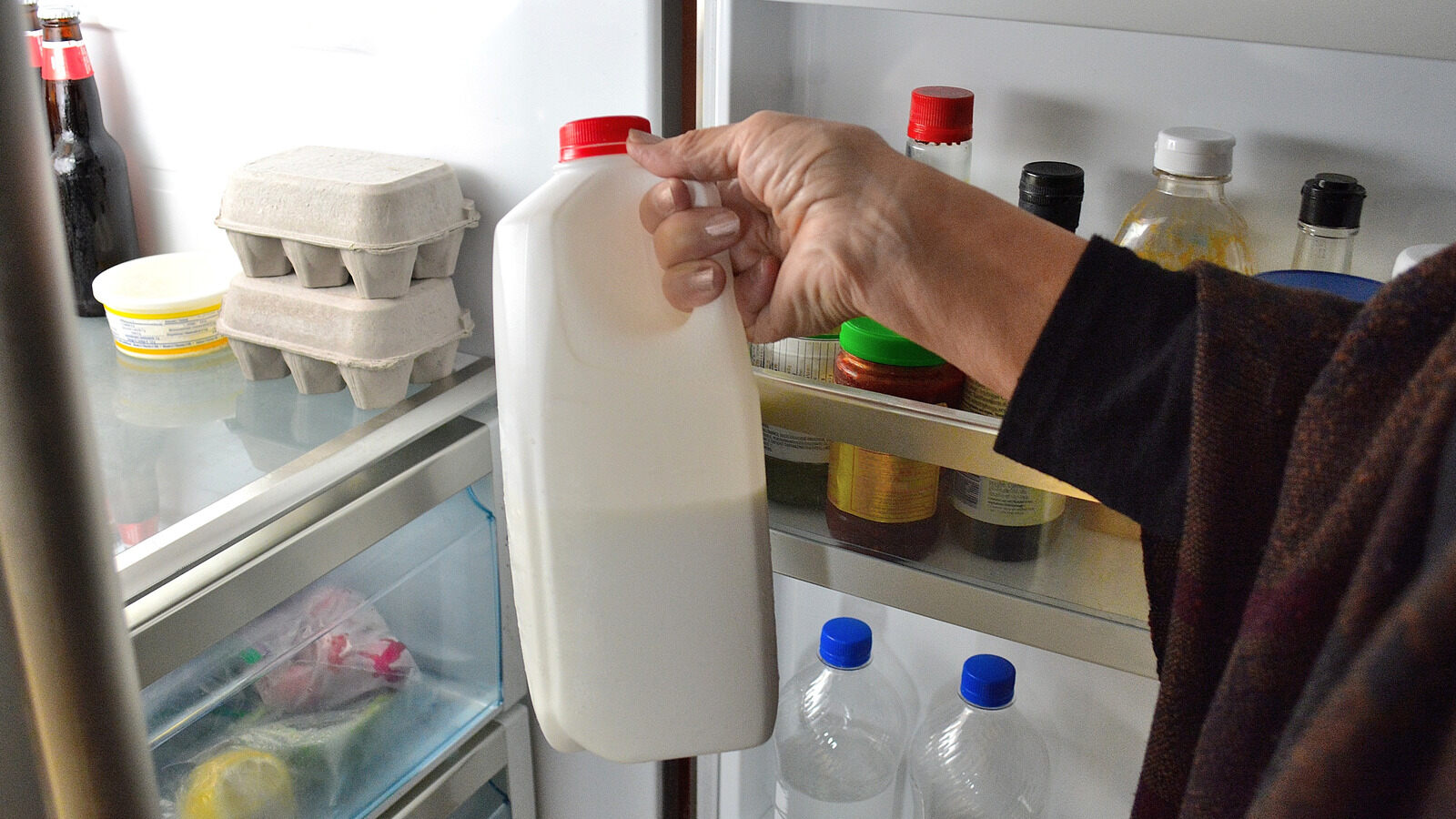


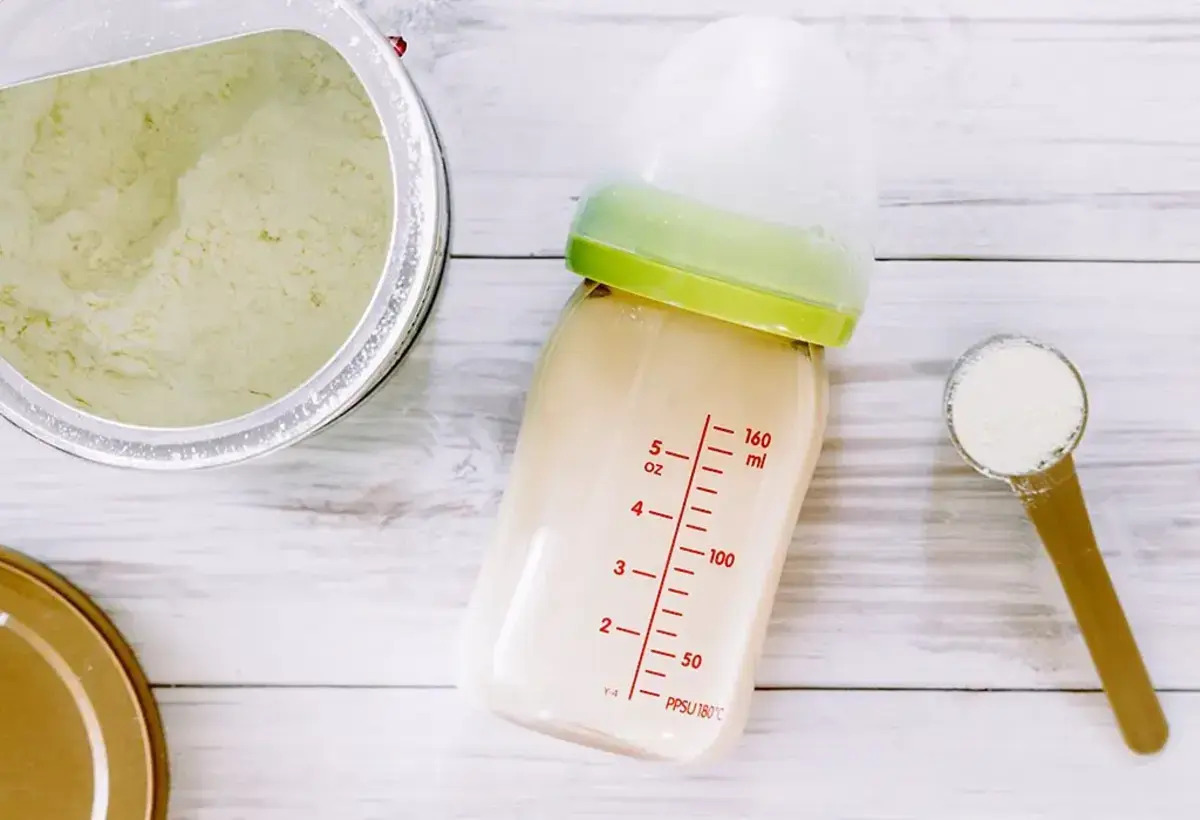
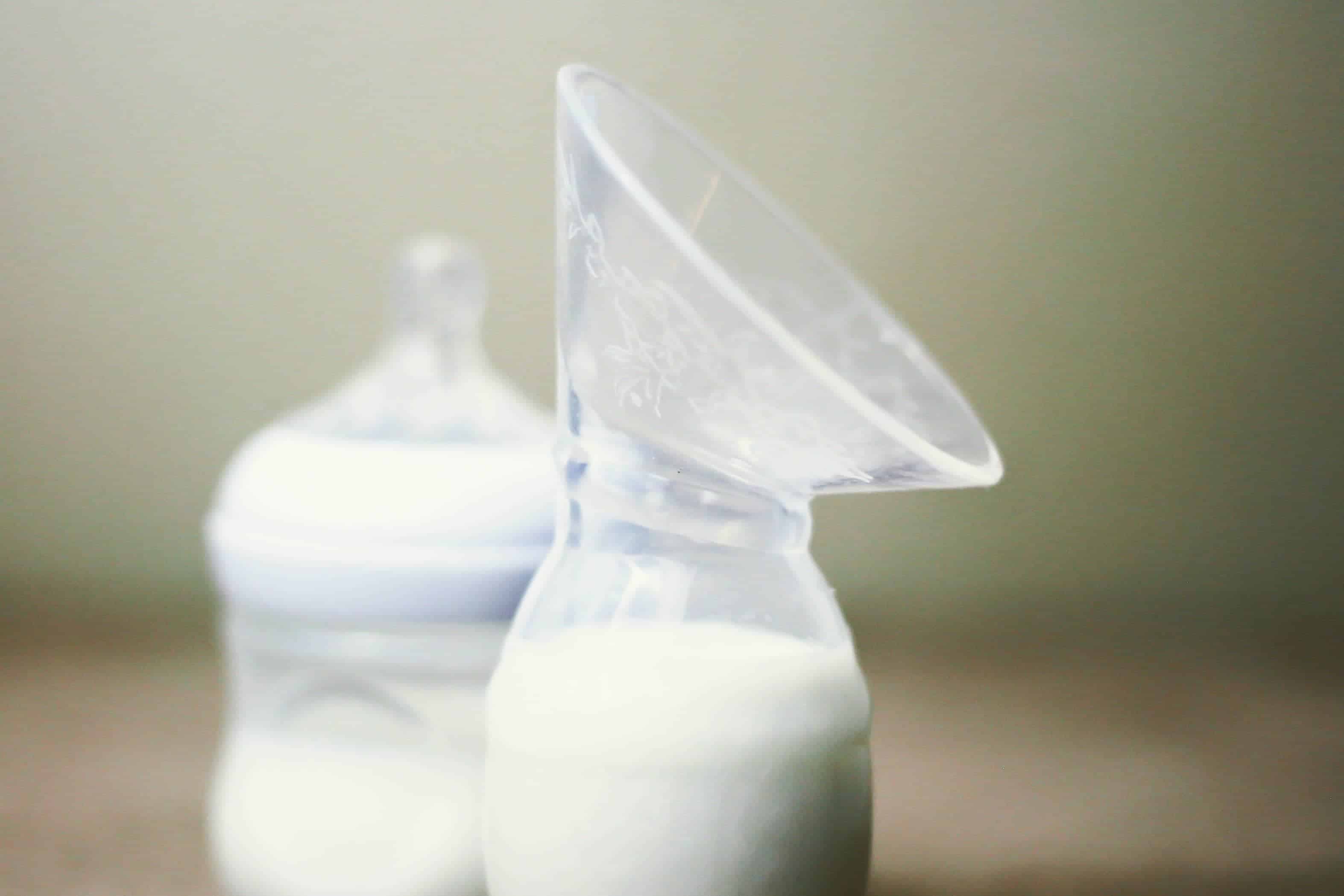
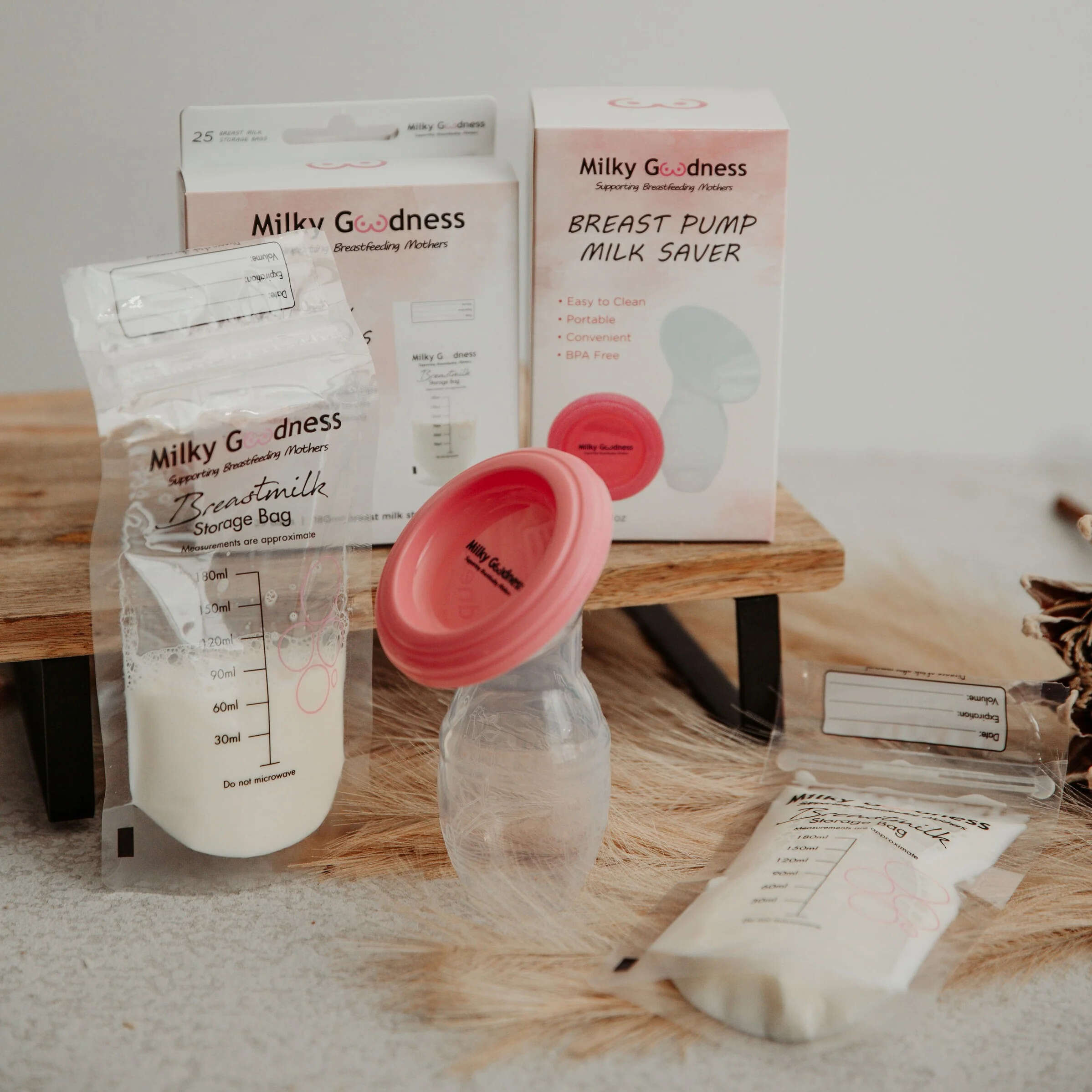
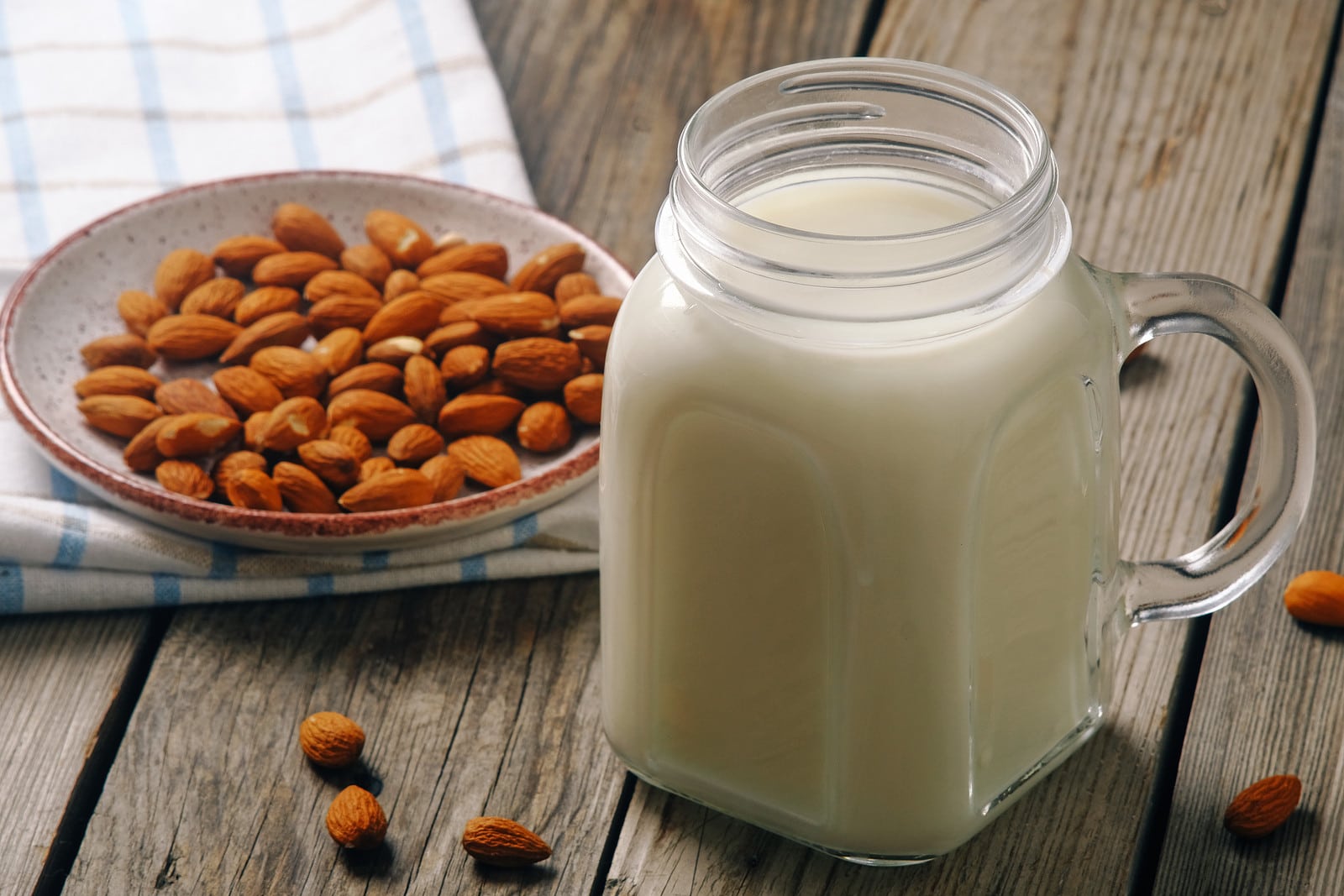

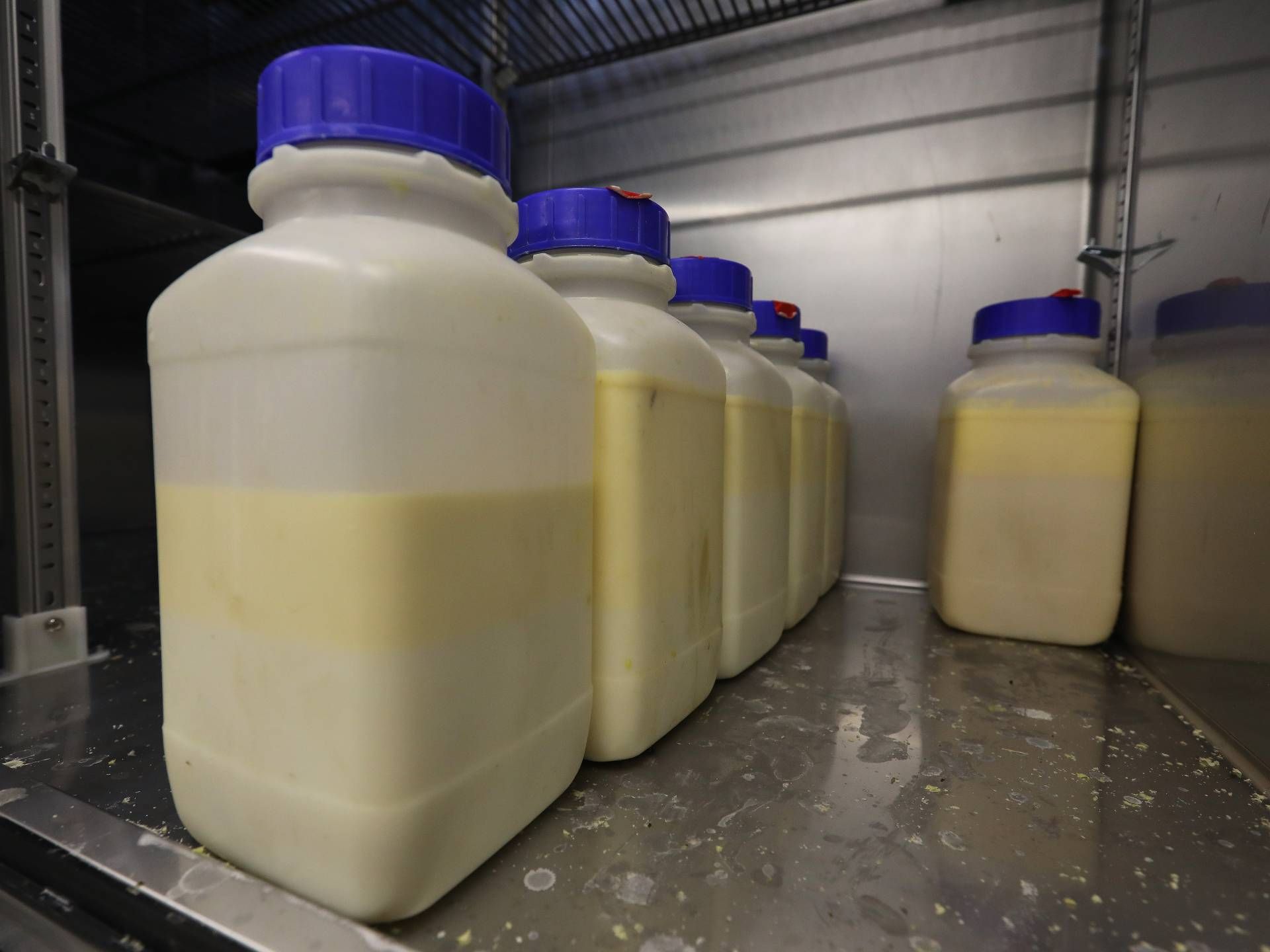

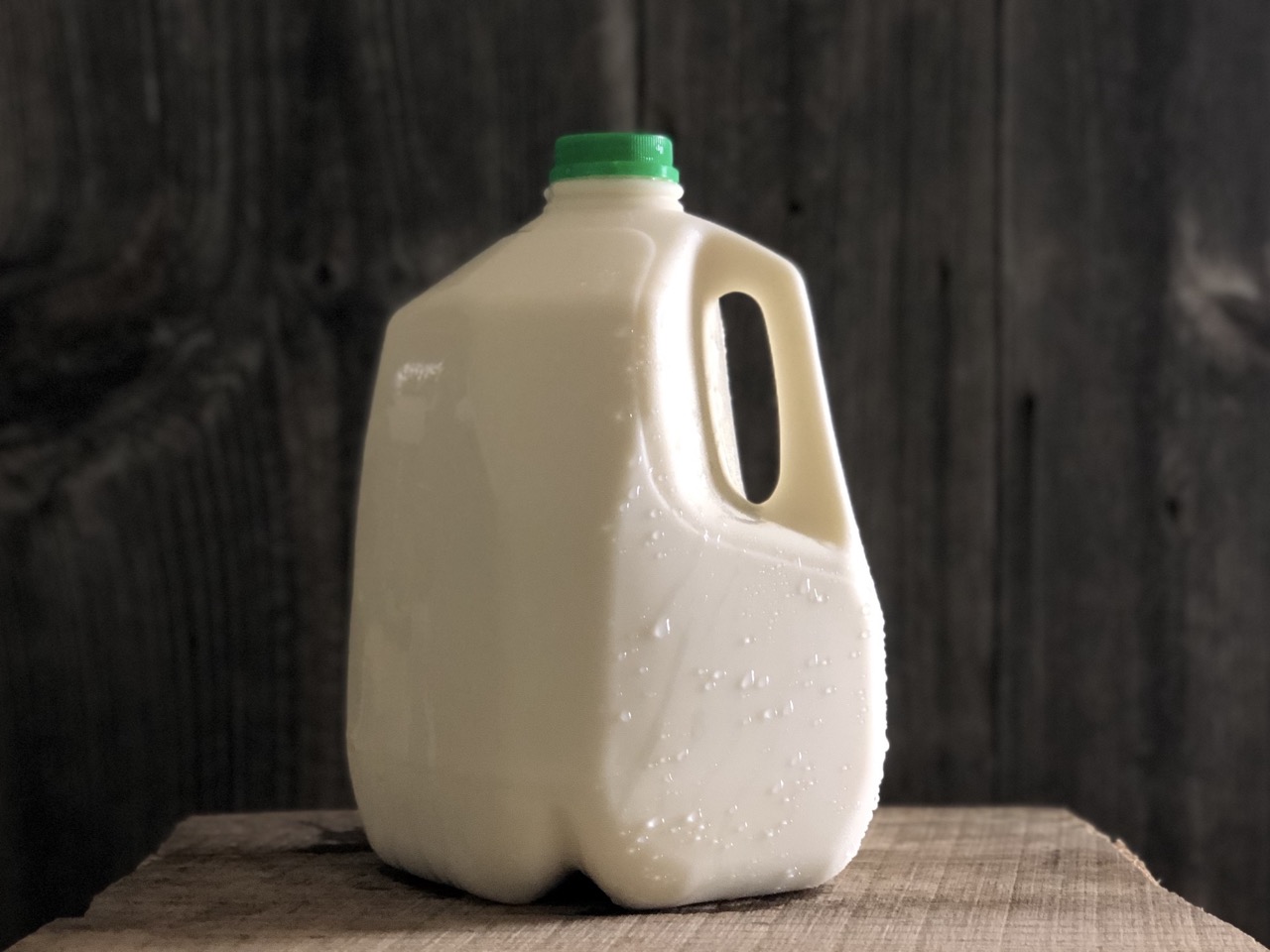
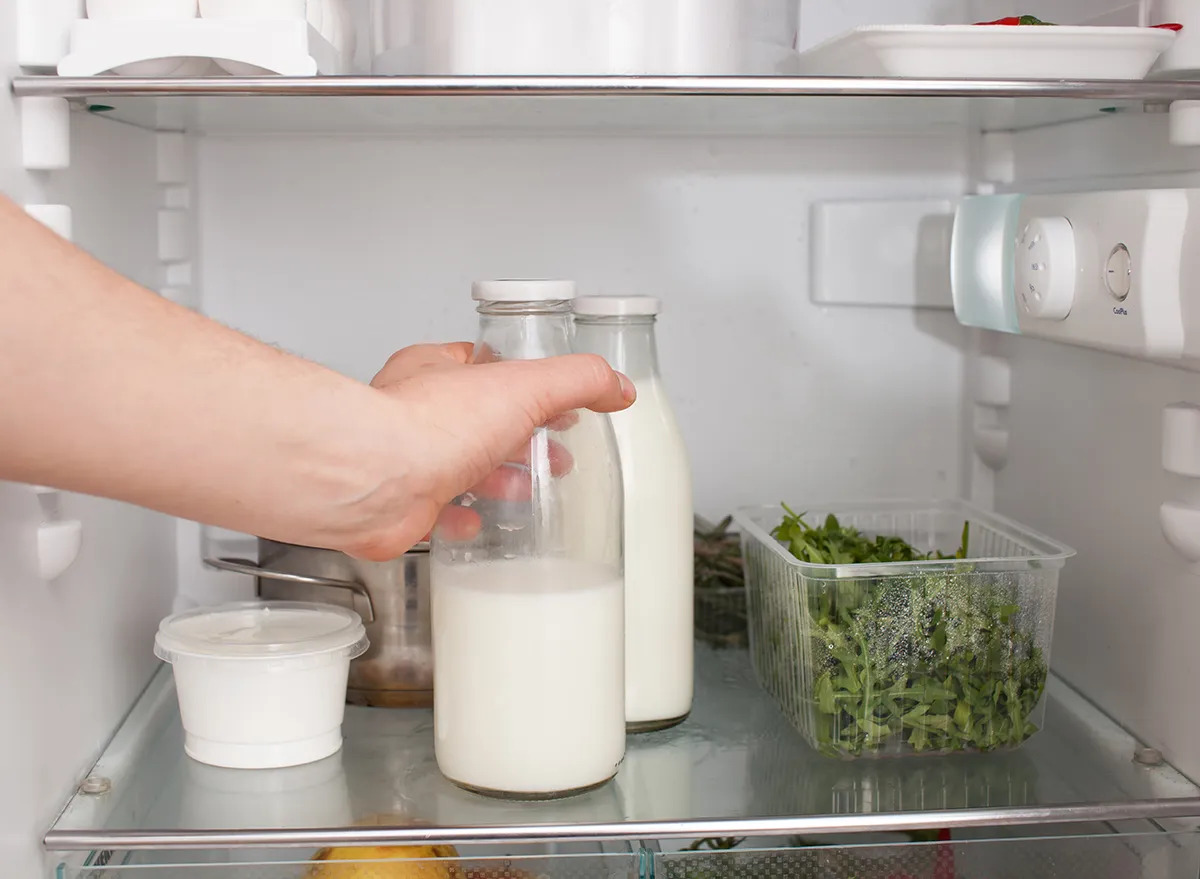

0 thoughts on “How To Store Condensed Milk”